skip to main |
skip to sidebar





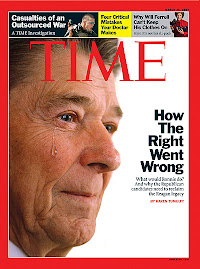
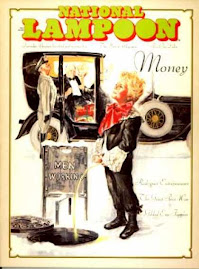
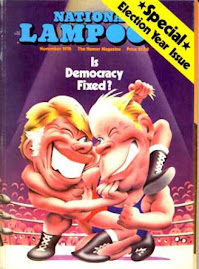

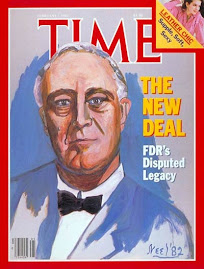


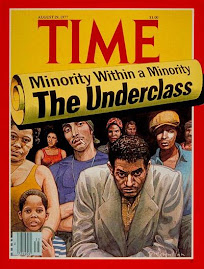


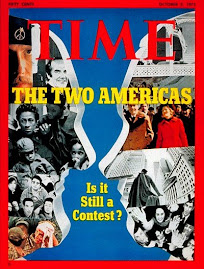
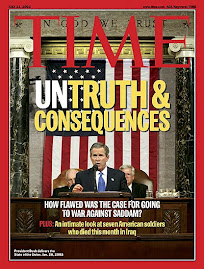

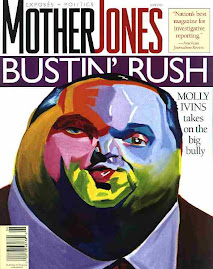
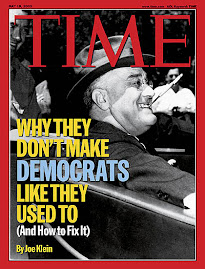
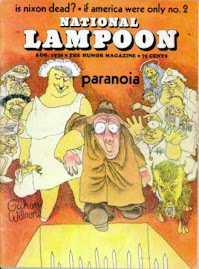
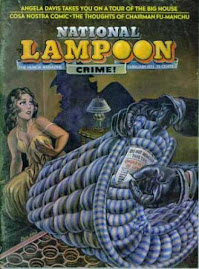
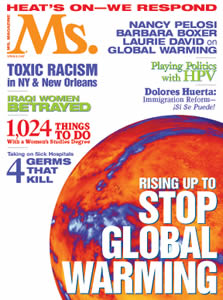



Visit 5 Sky Blue Acres...

Blog Archive
-
►
2015
(1)
- ► 05/03 - 05/10 (1)
-
►
2011
(282)
- ► 08/28 - 09/04 (1)
- ► 08/07 - 08/14 (1)
- ► 06/12 - 06/19 (1)
- ► 06/05 - 06/12 (2)
- ► 05/15 - 05/22 (2)
- ► 05/08 - 05/15 (4)
- ► 05/01 - 05/08 (6)
- ► 04/24 - 05/01 (8)
- ► 04/17 - 04/24 (4)
- ► 04/10 - 04/17 (9)
- ► 04/03 - 04/10 (9)
- ► 03/27 - 04/03 (9)
- ► 03/20 - 03/27 (13)
- ► 03/13 - 03/20 (19)
- ► 03/06 - 03/13 (20)
- ► 02/27 - 03/06 (43)
- ► 02/20 - 02/27 (31)
- ► 02/13 - 02/20 (27)
- ► 02/06 - 02/13 (12)
- ► 01/30 - 02/06 (14)
- ► 01/23 - 01/30 (7)
- ► 01/16 - 01/23 (18)
- ► 01/09 - 01/16 (15)
- ► 01/02 - 01/09 (7)
-
►
2010
(106)
- ► 12/26 - 01/02 (4)
- ► 12/19 - 12/26 (2)
- ► 12/12 - 12/19 (1)
- ► 12/05 - 12/12 (7)
- ► 11/28 - 12/05 (6)
- ► 11/21 - 11/28 (7)
- ► 11/14 - 11/21 (5)
- ► 11/07 - 11/14 (1)
- ► 10/31 - 11/07 (4)
- ► 10/17 - 10/24 (2)
- ► 10/03 - 10/10 (4)
- ► 09/26 - 10/03 (1)
- ► 09/19 - 09/26 (1)
- ► 09/12 - 09/19 (1)
- ► 09/05 - 09/12 (2)
- ► 08/22 - 08/29 (1)
- ► 08/15 - 08/22 (2)
- ► 08/08 - 08/15 (1)
- ► 07/11 - 07/18 (1)
- ► 07/04 - 07/11 (2)
- ► 06/20 - 06/27 (2)
- ► 06/13 - 06/20 (1)
- ► 06/06 - 06/13 (1)
- ► 05/30 - 06/06 (2)
- ► 05/16 - 05/23 (1)
- ► 05/09 - 05/16 (2)
- ► 05/02 - 05/09 (3)
- ► 04/25 - 05/02 (1)
- ► 04/18 - 04/25 (1)
- ► 04/11 - 04/18 (3)
- ► 04/04 - 04/11 (2)
- ► 03/28 - 04/04 (2)
- ► 03/21 - 03/28 (1)
- ► 03/14 - 03/21 (2)
- ► 03/07 - 03/14 (3)
- ► 02/28 - 03/07 (2)
- ► 02/21 - 02/28 (2)
- ► 02/14 - 02/21 (2)
- ► 02/07 - 02/14 (2)
- ► 01/31 - 02/07 (3)
- ► 01/24 - 01/31 (3)
- ► 01/17 - 01/24 (4)
- ► 01/10 - 01/17 (2)
- ► 01/03 - 01/10 (4)
-
►
2009
(167)
- ► 12/27 - 01/03 (5)
- ► 12/20 - 12/27 (4)
- ► 12/13 - 12/20 (4)
- ► 12/06 - 12/13 (3)
- ► 11/29 - 12/06 (4)
- ► 11/22 - 11/29 (3)
- ► 11/15 - 11/22 (4)
- ► 11/08 - 11/15 (3)
- ► 11/01 - 11/08 (5)
- ► 10/25 - 11/01 (4)
- ► 10/18 - 10/25 (5)
- ► 10/11 - 10/18 (1)
- ► 09/27 - 10/04 (3)
- ► 09/20 - 09/27 (4)
- ► 09/13 - 09/20 (4)
- ► 09/06 - 09/13 (6)
- ► 08/30 - 09/06 (5)
- ► 08/23 - 08/30 (1)
- ► 08/16 - 08/23 (2)
- ► 08/09 - 08/16 (6)
- ► 08/02 - 08/09 (1)
- ► 07/26 - 08/02 (1)
- ► 07/19 - 07/26 (2)
- ► 07/12 - 07/19 (3)
- ► 07/05 - 07/12 (2)
- ► 06/28 - 07/05 (3)
- ► 06/21 - 06/28 (3)
- ► 06/14 - 06/21 (3)
- ► 06/07 - 06/14 (4)
- ► 05/31 - 06/07 (6)
- ► 05/24 - 05/31 (6)
- ► 05/17 - 05/24 (5)
- ► 05/10 - 05/17 (5)
- ► 05/03 - 05/10 (5)
- ► 04/26 - 05/03 (5)
- ► 04/19 - 04/26 (7)
- ► 04/12 - 04/19 (3)
- ► 04/05 - 04/12 (5)
- ► 03/29 - 04/05 (2)
- ► 03/22 - 03/29 (4)
- ► 03/15 - 03/22 (1)
- ► 03/01 - 03/08 (1)
- ► 02/22 - 03/01 (1)
- ► 02/15 - 02/22 (1)
- ► 02/08 - 02/15 (2)
- ► 02/01 - 02/08 (5)
- ► 01/25 - 02/01 (2)
- ► 01/18 - 01/25 (2)
- ► 01/04 - 01/11 (1)
-
►
2008
(448)
- ► 12/28 - 01/04 (6)
- ► 12/21 - 12/28 (7)
- ► 12/14 - 12/21 (8)
- ► 12/07 - 12/14 (8)
- ► 11/30 - 12/07 (7)
- ► 11/23 - 11/30 (7)
- ► 11/16 - 11/23 (9)
- ► 11/09 - 11/16 (5)
- ► 11/02 - 11/09 (7)
- ► 10/26 - 11/02 (13)
- ► 10/19 - 10/26 (21)
- ► 10/12 - 10/19 (20)
- ► 10/05 - 10/12 (18)
- ► 09/28 - 10/05 (13)
- ► 09/21 - 09/28 (15)
- ► 09/14 - 09/21 (10)
- ► 09/07 - 09/14 (10)
- ► 08/31 - 09/07 (13)
- ► 08/24 - 08/31 (11)
- ► 08/17 - 08/24 (7)
- ► 08/10 - 08/17 (4)
- ► 08/03 - 08/10 (7)
- ► 07/27 - 08/03 (7)
- ► 07/20 - 07/27 (9)
- ► 07/13 - 07/20 (1)
- ► 07/06 - 07/13 (5)
- ► 06/29 - 07/06 (9)
- ► 06/22 - 06/29 (6)
- ► 06/15 - 06/22 (7)
- ► 06/08 - 06/15 (7)
- ► 06/01 - 06/08 (12)
- ► 05/25 - 06/01 (12)
- ► 05/18 - 05/25 (15)
- ► 05/11 - 05/18 (9)
- ► 05/04 - 05/11 (11)
- ► 04/27 - 05/04 (4)
- ► 04/20 - 04/27 (5)
- ► 04/13 - 04/20 (3)
- ► 04/06 - 04/13 (5)
- ► 03/30 - 04/06 (4)
- ► 03/23 - 03/30 (4)
- ► 03/16 - 03/23 (10)
- ► 03/09 - 03/16 (10)
- ► 03/02 - 03/09 (8)
- ► 02/24 - 03/02 (7)
- ► 02/17 - 02/24 (12)
- ► 02/10 - 02/17 (6)
- ► 02/03 - 02/10 (14)
- ► 01/27 - 02/03 (4)
- ► 01/20 - 01/27 (7)
- ► 01/13 - 01/20 (5)
- ► 01/06 - 01/13 (4)
-
▼
2007
(1012)
- ► 12/30 - 01/06 (10)
- ► 12/23 - 12/30 (8)
- ► 12/16 - 12/23 (6)
- ► 12/09 - 12/16 (9)
- ► 12/02 - 12/09 (16)
- ► 11/25 - 12/02 (17)
- ► 11/18 - 11/25 (8)
- ► 11/11 - 11/18 (19)
- ► 11/04 - 11/11 (16)
- ► 10/28 - 11/04 (21)
- ► 10/21 - 10/28 (23)
- ► 10/14 - 10/21 (18)
- ► 10/07 - 10/14 (15)
- ► 09/30 - 10/07 (36)
- ► 09/23 - 09/30 (22)
- ► 09/16 - 09/23 (24)
- ► 09/09 - 09/16 (22)
- ► 09/02 - 09/09 (19)
- ► 08/26 - 09/02 (12)
- ► 08/19 - 08/26 (20)
- ► 08/12 - 08/19 (16)
- ► 08/05 - 08/12 (15)
- ► 07/29 - 08/05 (11)
- ► 07/22 - 07/29 (17)
- ► 07/15 - 07/22 (8)
- ► 07/08 - 07/15 (7)
- ► 07/01 - 07/08 (12)
- ► 06/24 - 07/01 (23)
- ► 06/17 - 06/24 (15)
-
▼
06/10 - 06/17
(20)
- GREED
- In The Eyes of The Beholder
- War Is a Racket
- OTBL Motivational Consulting Presents
- The $in Of Pursuit
- Jail House Rock
- Sign of the times...
- OTBL Asks "Why have public schools at all?
- Remember June 14, 2005:
- The Good American
- Quote of the Century
- Ayn Rand's Vacation Bible School
- ...
- Jesus Joins NRA
- North Beach Nut Farm Father's Day Special
- Just Say YES (Youth Education Summits) to Guns!
- OnTheBorderLine: One Side of the Mouth Speaks
- Ayn Rand Laboratories Presents: Randoids
- Chicken Little Slaughtered at OnTheBorderLine.net
- Why the Peaceful Majority is Irrelevant
- ► 06/03 - 06/10 (16)
- ► 05/27 - 06/03 (26)
- ► 05/20 - 05/27 (21)
- ► 05/13 - 05/20 (27)
- ► 05/06 - 05/13 (18)
- ► 04/29 - 05/06 (31)
- ► 04/22 - 04/29 (28)
- ► 04/15 - 04/22 (19)
- ► 04/08 - 04/15 (33)
- ► 04/01 - 04/08 (23)
- ► 03/25 - 04/01 (20)
- ► 03/18 - 03/25 (22)
- ► 03/11 - 03/18 (19)
- ► 03/04 - 03/11 (6)
- ► 02/25 - 03/04 (18)
- ► 02/18 - 02/25 (23)
- ► 02/11 - 02/18 (29)
- ► 02/04 - 02/11 (26)
- ► 01/28 - 02/04 (26)
- ► 01/21 - 01/28 (31)
- ► 01/14 - 01/21 (32)
- ► 01/07 - 01/14 (33)
-
►
2006
(1474)
- ► 12/31 - 01/07 (38)
- ► 12/24 - 12/31 (32)
- ► 12/17 - 12/24 (39)
- ► 12/10 - 12/17 (32)
- ► 12/03 - 12/10 (61)
- ► 11/26 - 12/03 (39)
- ► 11/19 - 11/26 (16)
- ► 11/12 - 11/19 (16)
- ► 11/05 - 11/12 (37)
- ► 10/29 - 11/05 (41)
- ► 10/22 - 10/29 (20)
- ► 10/15 - 10/22 (14)
- ► 10/08 - 10/15 (15)
- ► 10/01 - 10/08 (14)
- ► 09/24 - 10/01 (21)
- ► 09/17 - 09/24 (24)
- ► 09/10 - 09/17 (21)
- ► 09/03 - 09/10 (22)
- ► 08/27 - 09/03 (26)
- ► 08/20 - 08/27 (36)
- ► 08/13 - 08/20 (27)
- ► 08/06 - 08/13 (30)
- ► 07/30 - 08/06 (19)
- ► 07/23 - 07/30 (27)
- ► 07/16 - 07/23 (44)
- ► 07/09 - 07/16 (29)
- ► 07/02 - 07/09 (24)
- ► 06/25 - 07/02 (18)
- ► 06/18 - 06/25 (26)
- ► 06/11 - 06/18 (13)
- ► 06/04 - 06/11 (10)
- ► 05/28 - 06/04 (27)
- ► 05/21 - 05/28 (6)
- ► 05/14 - 05/21 (9)
- ► 05/07 - 05/14 (36)
- ► 04/30 - 05/07 (24)
- ► 04/23 - 04/30 (39)
- ► 04/16 - 04/23 (50)
- ► 04/09 - 04/16 (44)
- ► 04/02 - 04/09 (35)
- ► 03/26 - 04/02 (57)
- ► 03/19 - 03/26 (32)
- ► 03/12 - 03/19 (21)
- ► 03/05 - 03/12 (22)
- ► 02/26 - 03/05 (30)
- ► 02/19 - 02/26 (36)
- ► 02/12 - 02/19 (29)
- ► 02/05 - 02/12 (33)
- ► 01/29 - 02/05 (27)
- ► 01/22 - 01/29 (33)
- ► 01/15 - 01/22 (26)
- ► 01/08 - 01/15 (14)
- ► 01/01 - 01/08 (13)
-
►
2005
(338)
- ► 12/25 - 01/01 (20)
- ► 12/18 - 12/25 (24)
- ► 12/11 - 12/18 (24)
- ► 12/04 - 12/11 (20)
- ► 11/27 - 12/04 (29)
- ► 11/20 - 11/27 (30)
- ► 11/13 - 11/20 (26)
- ► 11/06 - 11/13 (31)
- ► 10/30 - 11/06 (27)
- ► 10/23 - 10/30 (18)
- ► 10/16 - 10/23 (19)
- ► 10/09 - 10/16 (15)
- ► 10/02 - 10/09 (8)
- ► 09/25 - 10/02 (6)
- ► 09/18 - 09/25 (6)
- ► 09/11 - 09/18 (4)
- ► 09/04 - 09/11 (7)
- ► 08/28 - 09/04 (2)
- ► 08/21 - 08/28 (2)
- ► 08/14 - 08/21 (4)
- ► 07/31 - 08/07 (2)
- ► 07/24 - 07/31 (3)
- ► 07/17 - 07/24 (3)
- ► 06/12 - 06/19 (2)
- ► 05/29 - 06/05 (4)
- ► 05/22 - 05/29 (2)
E-mail us@ atbl1@yahoo.com

Daily Checks
- Wisconsin Watch
- Iowa Independent
- MinnPost
- Atlantic Monthly
- Progressive Populist
- The American Prospect
- Harpers
- The Progressive
- The New Republic
- The Hill
- On Line Journal
- Congress.org
- Power News
- Comedy Central
- Cap Times
- Wisconsin Eye
- Huffington Post
- Online Journal
- The Daily Beast
- Truth Dig
- DEMOS
- Common Dreams
- Democracy Journal
Local Government
- City Data Info
- City of New Richmond
- NR School District
- Wis Counties Asso
- St. Croix County
- Wis Towns Association
- Town of Richmond
- Town of Erin Prairie
- Town of Alden
- Town of Apple River
- Town of River Falls
- Town of Somerset
- League of Wis Municipalities
- Wis City/County Management Association
- Wis County Highway Association
TEA PARTY
Podcasts
- Blast The Right
- Progressive News Radio
- Best of the Left
- Mother Jones
- KCRW podcast links
- Democracy Now
- Counterspin (FAIR)
- On Point
- National Press Club
- Econ Talk
- London School of Economics
- London School of Econ
- Tax Policy Institute
- New York Public Library
- Center 4 Biological Diversity
- Dan Carlin Archives
- History Podcast Network
- LexisNexus
- Tree Hugger Radio
- LIME Podcast Guide
- Farm Feeds(podcasts)
- Headline Podcast (various)
- Podcast Directory
- Your Call Radio
- Military History
- VID: World Focus
- Harvard U Press
- Col. Journalism Review
- Princeton University Podcasts
- Open Culture
- Olin Lecture Library
- Economic Club of Washington DC
- U of Chicago Law School
- The Progressive Radio Show
- KTLK Radio
- Economics Podcast
- Commonwealth Club
- Pod Bean
- Bloomberg
- Von Mises Institute
- Foundation for Econ Ed
- Noam Chomsky
- Meditation
- Scientific American
- 360
- Here On Earth
- Ethical Corp
- Nature
- Speaking of Faith
- AEI Podcasts
- NPR Economics
- NPR Podcast directory
- Wis Public Radio
- Media Matters
- Out Loud Opinions
- Hillsdale College Podcasts
- C-Span Podcasts
- Free Speech TV
- Link TV
- Learn Out Loud
- Ring of Fire
- Reason TV
- To The Point (kcrw)
Big Farm Tracks
- Farmer To Farmer
- Natl Cattleman's Beef Asso
- Wis Campaign Finance Database
- Ag Links
- The Country Today
- Center for Rural Affairs
- Progressive Farmer
- Ag Periodicals
- CAFO Info
- Farm Feeds (podcasts)
- Open Congress
- Farm Policy Facts
- Amber Waves Of Grain Report
- The Country Today
- Farm Subsidy Database
- Media Matters Contribution Tracking
- Wis Farm Facts
- Carbon Capture Report
- St. Croix FB 2009 Newsletter
- St. Croix County Farm Bureau
- Wis. Farm Bureau
- American Farm Bureau
- Grist
- US Senate Lobbying Reports
- US House Lobbying Disclosure
Global Climate Change
Think Tanks
Health Care Debate
Sorting It Out...
- 1A: OnLine Journal
- BG: Fighting Bob
- BG: Free Democracy
- BG: Instapundit
- BG: One Wisconsin Now
- BG: Political Blog List
- BG: Red State Update
- BG: Talking Points Memo
- BG: The Moderate Voice
- BG: The Wheeler Report
- BG: Think Progress
- BG: Uppity Wisconsin
- BG: Wisconsin Politics
- Bi-wkly: High Country News
- COURT: Cornell Supreme Court Collection
- COURT: Landmark Supreme Court Cases
- COURT: Recent Supreme Court Decisions
- COURT: SCOTUSblog
- COURT: US Courts
- COURT: US Supreme Court
- ECON: American Manufacturing
- ECON: Baseline Scenario
- ECON: Data360
- ECON: Economic Web Journals
- ECON: Economics - About
- ECON: Fin Times Economists' Forum
- ECON: Free Buck
- ECON: Inflation Data
- ECON: Moody's Economy
- ECON: Perot Charts
- ECON: The Economist
- ECON: US Census Bureau
- ECON: WebEc
- ECON: WSJ Real Time Economics
- GV: Federal Budget
- GV: Gov't 101
- GV: JPN LINKS
- GV: Library of Congress
- GV: Lobbying in Wisconsin
- GV: State of Wisconsin
- GV: The Congressional Record
- GV: The White House
- GV: US Gov't Revenue
- GV: US Gov't Spending
- GV: Wis Democracy Campaign
- GV: Wis Grassroots Groups
- GV: Wis. Election Board
- GV: Wis. Gov't Accountability Board
- GV: Wisconsin Eye
- GV: Wisconsin State Legislature
- LG: 111th Senate Roll Call Votes
- LG: US Congress Roll Call Votes
- LG: US House Clrek
- LG: US Senate
- MD: Broadcasting & Cable
- MD: CNN Videos
- MD: Columbia Journalism Review
- MD: Common Dreams
- MD: Common Dreams
- MD: Fact Check
- MD: Freepress
- MD: Media Matters
- MD: News Busters
- MD: News Trust
- MD: Press Think
- Monthly: Democracy Journal
- NP: Capital Times/Wis State Journal
- NP: Christian Science Monitor
- NP: Grist
- NP: Milwaukee Journal Sentinal
- NP: Rivertown News
- NP: The CS Monitor
- NP: The Guardian
- NP: The New York Times
- NP: Time
- NP: Wall Street Journal
- NP: Washington Post
- On-line: Greater Good
- On-Line: Miller-McCune
- On-Line: Orion
- PR: AMerican Prospect
- PR: Daylife
- PR: Op Ed News
- PR: Politico
- PR: Real Clear Politics
- PR: Rollingstone
- PR: The Economist
- PR: The Progressive
- PR: The Progressive Populist
- PR: The Week
- PR: World Press
- PR:American Spectator
- RD: Democracy Now
- RD: Fresh Air Radio
- RD: National Public Radio
- RD: On Point
- RD: This American Life
- RD: Thom Hartmann Show
- RD: Wis Public Radio
- TV: American Experience
- TV: Bill MOyers
- TV: CSPAN
- TV: Frontine
- TV: Minnesota PUblic TV
- TV: PBS
- TV: Reason TV
- TV: Wisconsin Public TV
- WD: Center of Responsive Politics
- WD: Concord Coalition
- WD: Lobbying & Campaign Finance Links
- WD: Southern Poverty Law Center
- WD: Sunlight Foundation
- Weekly: Fortune
- Weekly: Newsweek
- Weekly: Progressive Populist
- Weekly: The Economist
- Weekly: The Nation
- Weekly: The Week Magazine
- Weekly: The Weekly Standard
- Weekly: Time
- WEEKLY: US News & World Report
- XYZ: Atheist Nexus
- XYZ: Biographical Dictionary
- XYZ: Census Scope
- XYZ: Encyclopedia
- XYZ: Grandfather Economic Report
- XYZ: Imprimis
- XYZ: Info Please
- XYZ: MORE Library System
- XYZ: Q & A the Wiki Way
- XYZ: Snopes
- XYZ: STATS
- XYZ: The Big Read
- XYZ: Wikipedia

Right Wing Flapping
- New Majority
- The Next Right
- BreaitBart TV, etc.
- Taki's Mag
- Shaun Hannity @ FOX News
- Fresh Conservative
- Red State Update
- True North
- Info Wars
- Obama Deception
- Operation Rescue
- National Right To Life
- American Family Association
- NRA
- Leadership Institute
- Eagle Forum
- CATO Institute
- Hertitage Foundation
- American Conservative Union
- Americans for Tax Refrom
- Newt Gingrich
- American Solutions
- World View Radio
- One News Now
- Americans For Properity
- One News Now
Misc Link Dump
- Democracy Journal
- About.Com: US Politics
- Alter Net
- Atlas of US Elections
- Bizzaro Comic
- Capital Times
- Comedy Central
- Democracy Now
- Fact Check
- Fight the Smears
- Fix Housing First
- FlipperTV
- Fresh Air Radio
- Funny Times
- Funny Times
- Institute of Wisconsin's Future
- Irregular State News - Wisconsin
- Just The Facts: Public Policy Inst.
- Liberal Values
- LINK TV
- Media Channel Links
- Media Matters
- Milwaukee Journal Sentinal
- National Enquirer
- On Point Radio
- On The Issues
- One Wisconsin Now
- Op Ed News
- Open Secets
- PoliticFact.com
- POLITICO
- Progressive Populist
- Real Clear Politics
- Robert Reich Blog
- Scientific Commons
- Snopes
- STATS
- Talking Points Memo
- TED
- The Walrus
- The Week
- Thom Hartmann Radio
- Uppity Wisconsin
- US Demographic Maps: Census Scope
- US Magazine
- Wash. Post Fact Checker
- Wisconsin Lawyer
- Wisconsin Online
- Wisconsin Vote
Payday Loans
- Americans For Fairness In Lending
- Article: alternative to payday loans
- Bus Week: The Poverty Business Issue
- CarMax news
- Center For Responsible Lending
- Consumer Action
- Consumer Federation of America
- Isthmus: Wis Business Taxes
- Lobbying in Wis.
- Payday Magazine
- Payday Pundit
- Reclaim Democracy
- Reclaim Democracy: Wis Business Taxes
- Stop Payday Predators
- Wis Coalition for Consumer Choice
- Wis. Citizen Utility Board
- Wis. Council on Children & Families
- Wis: Consumer Law Litigation Clinic
- wis: Nutritional Resource Center
- Wis: Student Public Interest Research Group
- Wis: Track Bill Lobbyists

Local Related
Sustainable Agriculture
All Politics Is Local
Wisconsin Geological History

NEWS: Local, State, National & Beyond
- JPN Links
- New Richmond News
- St. Croix Sierra Club
- L & P in Hudson WI
- New Richmond Forum
- City Town Info
- Surfwax
- Info Please
- C-SPAN Big Picture Links
- CNN Video
- Daylife
- Chales Lipson Links
- Internet Public Library
- Hudson Star-Observer
- Pierce County Herald
- River Falls Journal
- Dunn County News
- River Town Newspapers
- Wis. Politics News
- Isthmus
- The Capital Times
- NATIONAL NEWS LINKS
- C-Span
- National Media Resources
- National Blog Resources
- Google: Society
- INTERNATIONAL LINKS
- International News Links
- Wisconsin State Journal
- Milwaukee Journal
- Small Business Times
- Capitol Region Business Journal
- Milwaukee Business Journal
- St. Paul Pioneer Press
- Minneapolis Star Tribune
- US News Links
- Alertnet News
- Newsmax
- Google: Conservative
- News Busters
- Conservative News Links
Health Care
History
Voting Record Scorecards
- Open Congress
- Project Vote Smart - Hraychuck
- Project Vote Smart - Harsdorf
- Project Vote Smart - Rhoades
- Project Vote Smart - Murtha
- NARAL Legislative Scorecard
- Wis League of Conservation Voter's
- Natl Asso. of Manufacturers Vote Grid
- WMC Voting Records
- Vote Trust USA - Wis
- Fair Elections Wis.
- Wis. AFL-CIO
- WMC Voting Records
- Wic Women's Council
- Throw The Rascals Out
- WI Partisan Voter Index
- Metro Milwaukee Asso of Com
Environmental Watch Dogs

Wis. Campaign Finance Refrom

Research Wis. Legislature
- JPN's Info Links
- Common Sense Americanism
- Moneyed Politicians
- Throw The Rascals Out
- Wisconsin Interest
- Asso. of Wis. Lobbyists
- Answers.com
- Wis. State Ethics Board
- Financial Resources On Line
- City Data.com
- Open Secrets
- Wis. Democracy Campaign
- News Meat Contribution Search
- Wis. State Legislature
- Wis. Leg.: 2007 Bill History
- Wis. Leg.: Bills by subject
- Wis. Leg.: Bills by author
- Wis. Leg.: 2007 Bill History
- Wis. Leg.: Bills by subject
- Natl Conferenc of State Legislatures
- Wis. Institute of Policy Research
- Payday Loan Bills
- Community Financial Services Association of America
- Center for Responsible Lending
- Community Financial Services Association of America Community Financial Services Association of America

Wis. Political Lobbies (L) & Watch Dogs (WD) Alerts

Conspiracy Anyone?

More politcal reads
Save Darfur

Outdoors In Wisconsin


Election 2008

Blogs Of Interest



Local Music, Activities, Etc.
- Purgatory Creek
- Paddy Ryan's
- Wis. DNR
- Honky Tonk Cafe (River Falls)
- UW-River Falls
- Minnesota Bluegrass
- Greg Boyd's House of Fine Instruments
- How Was The Show?
- Pickin Up Stream
- St. Croix Off Broadway Theater
- Wild Fruit Folk Music: Local Schedule
- The Space (New Rcihmond)
- Gibby's Lanes
- The Zebra Mussels
- Alzen Family Band
- Pete Neuman & Real Deal
- Out Gallavantin
- Danger Rangers
- Duck For The Oyster
- Morgans Run (Bluegrass)
- Kathy Boyd & Phoenix Rising (B-grass)
- Willow River Saloon
- The Twisted Grille
- Cedar Cultural Center
- Pantages Theater

National News

The Koch Family

Local Blogs Of Interest
- St. Croix County Genealogy Site
- Denmark Socialists Invade USA 4 07 Vacation
- Wisconsin' Lefty Blogs
- New Richmond News Nuggets
- Area Voices
- 5 Sky Blue Acres
- Inspirational Shoes
- The Guru Of Business
- Bring Back The Nap
- Oggtoons
- Unsightly Incompetence
- Uncommon Insight
- Progressive Messenger
- Craig Westover
- JPN's Info Links
- Life & Politics in Hudson, WI

Government Links

Childhood"s End...
There'll be war, there'll be peace.
But everything one day will cease.
All the iron turned to rust;
All the proud men turned to dust.
And so all things, time will mend.
So this song will end.
--Pink Floyd

Political Reads
- American Conservative
- Common Dreams
- Conservative USA Links
- Daily Kos
- Fact Check
- Media Matters
- Mother Jones
- New Left Review
- Right Wing News
- Salon
- The American Spectator
- The Nation
- The National Review
- The New Republic
- The New Statesman
- The Progressive
- The Weakly Standard
- Tom Paine
- Top 25 Progressive Links
- Yes! Magazine
The Music Scene
STUFF
- GIGA_USA
- Mag Cover Browser
- Metro Lyrics
- Wis Bird Photography
- Buzzword Generator
- Buzzwqord Generator 2
- Bullshit Generator
- More Buzzwords
- White Pages.com
- Amarxica
- Better World
- Modern MechanixCovers
- wiki How To
- The Insane Asylum
- Gratefulness
- Writer's Almanac
- Those Were The Days
- Today In Literature
- Today In Science
- Today In History
- This Week In History
- Big Labor
- Truth Dig
- Tom Dispatch
- Alter Net
- Counter Currents
- Wis Democracy Campaign
- Fact Check.Org
- Total News
- Various News Links
- International News Links
- World News Links
- Washington Post
- NY Times
- Christian Science Monitor
- Op Ed News
- dudehisattva
- Better World

Up To The Minute Video News
Paradox...

Right Media "Watchdogs"
- News Busters
- Media Transparency
- List of groups
- Tyndall Report
- Project Censored
- News Watch
- National Coalition Against Censorship
- Media Channel
- Fairness and Accuracy in Reporting
- Environmental Media Services
- The Benton Foundation
- Alternet.org
- Accuracy in Media (AIM)
- Rocky Mountain Media Watch
- Media Research Center
Actual Media Watchdogs
Political Watchdogs
News: Local 2 Global
Wisconsin News Sources
RESEARCH LINKS
- Energy Administration Agency (Statistics)
- Nat'l Center for Policy Analysis
- Articles Data Base
- Wis. Legislature Site
- Economic History Encyclopedia
- Rivertown Election Links
- Wis Political Organizations
- RF Library: Voter Information Resources
- Info Shop
- Political Economy Research Institute
- JPN's INFO LINKS (local, state, federal)
Environmental
- St. Croix Sierra Club
- The Nelson Institute
- Culture Change
- Mindfully
- Tree Hugger
- Environmental Blog Roundup
- Environmental Working Group
- Environmental Science & Engineering
- Compost
- In Business
- BioCycle
- Living Room
- Earth Light
- Resurgence
- Green Teacher
- Natural Life
- Environmental Protection Online
- Earth First! Journal
- People & the Planet
- Conscious Choice
- The Green Guide
- Yes!
- Canadian Geographic
- Environmental Data Services
- The Ecologist
- E - The Environmental magazine
- Grist
- Nature
- Heavens Above (Night sky tracker)
- Sun Magazine
- Orion Magazine
- Sierra Magazine
- Environmental Science & Engineering
- Compost
- In Business
- BioCycle
- Living Room
- Earth Light
- Resurgence
- Green Teacher
- Natural Life
- Environmental Protection Online
- Earth First! Journal
- People & the Planet
- Conscious Choice
- The Green Guide
- Yes!
- Canadian Geographic
- Environmental Data Services
- The Ecologist
- E - The Environmental magazine
- Grist
- Nature
- Heavens Above (Night sky tracker)
- Environmental Blog Roundup
Business, Ethics & Responsibility
- Asian Business Strategy
- Bioethics Institute
- Christian Ethics Today
- Columbia Journalism Review
- Corporate Responsibility Officer Magazine
- Cyrano's Journal.com
- Ethical Corporation
- Ethics Daily
- Hispanic Business
- Islamic Ethics
- Out Sourcing World
- Outsource
- Progressive Living
- The Black Business Journal
- Various Business Ethics Sources
Taxes
Economics
Education
Labor
Agriculture
Science
Ethanol
Climate Change
Religion
Politics: Left
- Carpetbagger Report
- Counter Punch
- Rational Revolution
- About US Liberals
- Thom Hartmann
- Bad Subject Political Links
- Correntwire links
- People's Weekly World
- In These Times
- New Labor Forum
- Tom Paine
- Sojourners
- Commonweal
- Know Your Right Wing Speaker
- ACORN
- Common Dreams
- Counter Currents
- Links to Progressive America
- Monthly Review
- Mother Jones
- Op Ed News
- Rolling Stone
- Socialism & Liberation
- The American Prospect
- The Nation
- The New Republic
- The Progressive
- Top 25 Progressive Links
- Z Magazine
Politics: Moderate
Politics: All Over The Road
Politics: Right
- Stormfront: David Duke & Don Black KKK'ers
- David Duke
- Conservative Grassroots Network
- Republican Sex Scandals
- Anti-Gov. Handbook
- Wall Street Journal
- News Busters
- Conservative Links
- KTLK 100.3 FM
- Wis. Policy Research Institute
- Public Interest Watch
- Discover The Networks
- John Birch Society
- JBS Conservative Link
- The New American (JBS)
- The Quotable Von Mises
- Family Security Matters
- Free Market News
- Town Hall
- The American Conservative
- Conservative Web Watch
- Wisconsin Conservative Digest
- The Conservative Digest Weekly
- The Weekly Standard
Podcasts
Etc. Magazines
Misc...
Gone To His Eternal Roasting Place




11 comments:
MONEY CHANGERS are the BANKERS. They are NOT capitalists. They are s separate group that needs governments to allow their schemes to survive. If I personally lent out 10x the amount of money that I had someone would probably shoot me. Not the bankers! They are FDIC insured!
Christ.
At least get a quote that backs up the ridiculous claim that "capitalism" is a "pyramid scheme". Nothing could be further from the truth.
Cato:
The idea is to stimulalte thought and to educate us readers. Everything doesn't have to fit like a glove. There would probably be fewer capitalists without the banking scheme and visa versa.
And I believe Christ was not a big fan of the money lenders...
No Jesus was not a fan, and neither am I.
I don't think making money off of lending out money to others is wrong. Making money off of imaginary money you made up and then lending out to others though is.
As for the "idea": the picture does fit with the quote, nor does the quote fit with the title of the post.
I can't very well do the following:
666 IS GAY
[picture]http://www.comedycentral.com/press/images/southpark/BigGayAl.jpg[/picture]
And the silken sad uncertain rustling of each purple curtain
Thrilled me - filled me with fantastic terrors never felt before;
So that now, to still the beating of my heart, I stood repeating
`'Tis some visitor entreating entrance at my chamber door -
-Edgar Allan Poe
IT MAKES NO SENSE
Cato:
When you say "gay," do you mean the old fashioned lighty, fluffy gay or newer fangled brotherly love kind of gay?
Cato said:
"If I personally lent out 10x the amount of money that I had someone would probably shoot me. Not the bankers! They are FDIC insured!"
Cato:
Are you saying that banks can loan more than the funds they have on deposit?
Just because deposits are FDIC insured, does that allow banks to loan 10x over the amount of their revenues?
I'd be interested in more info on this.
This explains how the Federal Reserve managements the deposit requirements. Concerning monetary policy, if the Fed wants to tighten the money supply, they can raise the percent of deposit requirements needed to be on hand. This will decrease the amount of money in the economy and tighten it up. Controlling the deposit percentage is a key component of monetary control.
---
Reserve Requirements
Reserve requirements, a tool of monetary policy, are computed as percentages of deposits that banks must hold as vault cash or on deposit at a Federal Reserve Bank.
Reserve requirements represent a cost to the banking system. Bank reserves, meanwhile, are used in the day-to-day implementation of monetary policy by the Federal Reserve.
As of June 2004, the reserve requirement was 10% on transaction deposits, and there were zero reserves required for time deposits.
Reserve requirements are the portion of deposits that banks may not lend and have to keep either on hand or on deposit at a Federal Reserve Bank
The Monetary Control Act (MCA) of 1980 authorizes the Fed's Board of Governors to impose a reserve requirement of from 8% to 14% on transaction deposits (checking and other accounts from which transfers can be made to third parties) and of up to 9% on nonpersonal time deposits (those not held by an individual or sole proprietorship). The Fed may also impose a reserve requirement of any size on the amount depository institutions in the United States owe, on a net basis, to their foreign affiliates or to other foreign banks. Under the MCA, the Fed may not impose reserve requirements against personal time deposits except in extraordinary circumstances, after consultation with Congress, and by the affirmative vote of at least five of the seven members of the Board of Governors.
In order to lighten the reserve requirements on small banks, the MCA provided that the requirement in 1980 would be only 3% for the first $25 million of a bank's transaction accounts, and that the $25-million figure would be adjusted annually by a factor equal to 80% of the percentage change in total transaction accounts in the United States. An adjustment late in 2005 put the amount at $48.3 million. Similarly, the Garn-St. Germain Act of 1982 provided for a 0% reserve requirement for the first $2 million of a bank’s deposits. This level, too, rises each year as deposits grow, but it is not adjusted for declines in deposits. For 2005, that level is $7 million.
The transactions-account reserve requirement is applied to deposits over a two-week period: a bank's average reserves over the period ending every other Wednesday must equal the required percentage of its average deposits in the two-week period ending the Monday sixteen days earlier. Banks receive credit in one two-week period for small amounts of excess reserves they held in the previous period; similarly, a small deficiency in one period may be made up with excess reserves in the following period. Banks that fail to meet their reserve requirements can be subject to financial penalties.
Reserve Requirements and Money Creation
Reserve requirements affect the potential of the banking system to create transaction deposits. If the reserve requirement is 10%, for example, a bank that receives a $100 deposit may lend out $90 of that deposit. If the borrower then writes a check to someone who deposits the $90, the bank receiving that deposit can lend out $81. As the process continues, the banking system can expand the initial deposit of $100 into a maximum of $1,000 of money ($100+$90+81+$72.90+...=$1,000). In contrast, with a 20% reserve requirement, the banking system would be able to expand the initial $100 deposit into a maximum of $500 ($100+$80+$64+$51.20+...=$500). Thus, higher reserve requirements should result in reduced money creation and, in turn, in reduced economic activity.
In practice, the connection between reserve requirements and money creation is not nearly as strong as the exercise above would suggest. Reserve requirements apply only to transaction accounts, which are components of M1, a narrowly defined measure of money. Deposits that are components of M2 and M3 (but not M1), such as savings accounts and time deposits, have no reserve requirements and therefore can expand without regard to reserve levels. Furthermore, the Federal Reserve operates in a way that permits banks to acquire the reserves they need to meet their requirements from the money market, so long as they are willing to pay the prevailing price (the federal funds rate) for borrowed reserves. Consequently, reserve requirements currently play a relatively limited role in money creation in the United States.
Reserve Requirements and Monetary Policy
Reserve requirements, the discount rate (the interest rate that Federal Reserve Banks charge depository institutions for short-term loans), and open market operations (the buying and selling of government securities) are the Fed's three main tools of monetary policy. There is a continual flow of reserves among banks, representing the ever-changing supply and demand for these reserves at individual banks. When the Fed engages in open market operations, it adds to or subtracts from the supply of reserves. The effectiveness of the Fed's actions result from the reasonably predictable demand for reserves that is created by reserve requirements.
The Fed changes reserve requirements for monetary policy purposes only infrequently. Reserve requirements impose a cost on the banks equal to the foregone interest on the amount by which required reserves exceed the reserves that banks would voluntarily hold in order to conduct their business, and the Fed has been hesitant to make changes that would increase that cost. (Between 1980 and 1987 reserve requirements underwent a series of changes mandated by the MCA. Requirements on banks that were members of the Federal Reserve System were lowered, while those on nonmember depository institutions were raised gradually from zero to the final levels applied to the member banks.)
There have been only a handful of policy-related reserve requirement changes since the MCA was passed in 1980. In March 1983, the Fed eliminated the reserve requirement on nonpersonal time deposits with maturities of 30 months or more, and in September 1983, it reduced that minimum maturity to 18 months. Then, in December 1990, the Fed cut the requirement on nonpersonal time deposits and on net Eurocurrency liabilities from 3% to 0%. In April 1992, it cut the requirement on transaction deposits from 12% to 10%. In announcing its December 1990 move, the Fed noted that the cut would reduce banks' costs, "providing added incentive to lend to creditworthy borrowers." Similarly, in announcing its April 1992 cut in reserve requirements, the Fed observed that the reduction would put banks "in a better position to extend credit." Current reserve requirements are low by historical standards. From 1937 to 1958, for example, the rate on demand deposits was always at least 20% for banks in New York and Chicago, which were "central reserve cities"—a term now obsolete.
Before the passage of the MCA in 1980, only banks that were members of the Federal Reserve System had to meet the Fed's reserve requirements. State-chartered banks that were not Federal Reserve members had to meet their state's reserve requirements, which typically were lower. As a result, many banks dropped their Federal Reserve membership, and member bank transaction deposits fell from nearly 85% of total U.S. transaction deposits in the late 1950s to 65% two decades later, weakening the Fed's ability to influence the money supply. The MCA sought to solve this problem by authorizing the Fed to set reserve requirements for all depository institutions, regardless of Fed membership status.
The Fed has long advocated the payment of interest on the reserves that banks maintain at Federal Reserve Banks. Such a step would have to be approved by Congress, which traditionally has been opposed because of the revenue loss that would result to the U.S. Treasury. Each year the Treasury receives the Fed's revenue that is in excess of its expenses. The payment of interest on reserves would, of course, be an additional expense to the Fed.
June 2006
Remeber is the movie "It's A Wonderful Life" when the people went to get their money out of the bank and they were told it wasn't all there? That's basically going on here. If a bank took in $100 and was required to $100 on hand, how would a bank earn any money? A bank would have to charge customers a storage fee for holding their $100 bill.
During the time of "It's a Wonderful Life" money was still backed by silver. There wasn't the "Federal Reserve" (which is a private bank that has around 1% "on reserve" -- so the name is an Orwellian masterpiece) back then either.
666 you are wrong. If a bank got 100 bucks -- they can lend out 100 bucks. That's fine. But the way the system is set up they can lend out 1000 bucks for every hundred they have. And then charge interest on all of it!
Banks have done this for a long time. If you think about it, there is little chance that everybody is going to come demanding their debts be paid all at once. So they can lend out money that doesn't actually exist. They just made it up. Then they charge interest.
It's the biggest scam ever.
And the whole thing is based off of the debt-money system. If the US was not in debt to the (private) Federal Reserve, we would have no money. Well, none of the money as we know it. We could always go back to debt free money, but then interest wouldn't be destroying poor people's savings since it wouldn't exist!
From The Money Masters:
For the Fed to "create money":
Step 1. The Fed Open Market Committee approves the purchase of U.S. Bonds on the open market.
Step 2. The bonds are purchased by the New York Fed Bank from whomever is offering them for sale on the open market.
Step 3. The Fed pays for the bonds with electronic credits to the seller’s bank, which in turn credits the seller’s bank account. These credits are based on nothing tangible. The Fed just creates them.
Step 4. The banks use these deposits as reserves. Most banks may loan out ten times (10x) the amount of their reserves to new borrowers, all at interest.
In this way, a Fed purchase of, say a million dollars worth of bonds, gets turned into over 10 million dollars in bank deposits. The Fed, in effect, creates 10% of this totally new money and the banks create the other 90%.
This also explains why the Fed consistently holds about 10% of the total US Treasury bonds. It had to buy those (with accounts or Fed notes the Fed simply created) from the public in order to provide the base for the rest of the money the private banks then get to create, most of which eventually winds up being used to purchase Treasury bonds, thus supplying Congress with the borrowed money to pay for its expenditures.
Due to a number of important exceptions to the 10% reserve ratio, some loans require less than 10% reserves, and many no (0%) reserves, making it possible for banks to create many times more than ten times the money they have in “reserve”. Due to these exceptions from the 10% reserve requirement, the Fed creates only a little under 2% of the total US money supply, while private banks create the other 98%.
To reduce the amount of money in the economy, the process is just reversed — the Fed sells bonds to the public, and money flows out of the purchaser’s local bank. Loans must be reduced by ten times the amount of the sale. So a Fed sale of a million dollars in bonds, results in 10 million dollars less money in the economy.
Cato:
It's been about 30 years since I had a class in money and banking, but I believe banks are required to carry certain reserve levels.
There are state and federal chartered banks. I believe, regardless the charter, a bank must have a certain level of reserves.
The actions for creating and removing money from the economy are tools of monetary control related to monetary policy. I think Milton Freidman was big on monetary policy. Greenspan was also into economy tweaking with things like Federal Reserve rates adjustments.
Are you suggesting we go back to the gold standard?
Greenbacks our government actually issued before worked well.
Many people have stood up against the banks. President Jackson told the Courts off about this issue, and someone tried to kill him. Someone killed Lincoln with his Greenbacks. Kennedy tried to issue silver dollars, he died. Not to sound too conspiracy theory orientated but... well, it's just how it is.
In 1933 FDR stole everyone's gold in the entire country. Owning gold became illegal. It was sent to Fort Knox.
Since, IIRC, Eisenhower's time, Ft. Knox has not been audited. The reason? There isn't any gold there. It was sold to the Rothchilds and the like years and years ago, before Nixon lifted the ban on gold (sending gold prices skyward so that those we sold the gold to at set rates of ~30 now could sell it back and make a killing!!).
The Federal Reserve is privately held and makes outrageous amounts of money. They don't pay income taxes and have not been audited.
I'm not advocating a gold standard. Look to Lincoln's precedent. In England the king once made a system of sicks for money. Tally sticks. They were accepted because the King said they were to be used as payment for taxes. This kept the money changers away for over 700 years, until Parliament ordered all the sticks burned in 1834 to heat the building (and then Parliament burned down). Anyway, the use of sticks was where we get the terms "stock holder" and the expression "short end of the stick" because of the way they were used. You can look it up. Doesn't matter. What matters is that the money doesn't have to be debt-money. That's all I'm saying.
Just curious Cato, what role do you see mass psychology playing in markets? What I mean is. If enough people start believing a recession is around the corner and stop spending, they create a self fulfilling prophesy. I'd guess the opposite would be true to to create a boom market.
Post a Comment